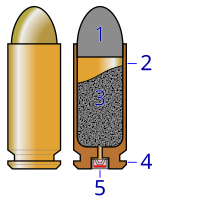
Photo from wikipedia
Using a combination of systematic experiments and Monte Carlo simulations, this report demonstrates that the distribution of neutral solvent has a strong impact on the quality and kinetics of the… Click to show full abstract
Using a combination of systematic experiments and Monte Carlo simulations, this report demonstrates that the distribution of neutral solvent has a strong impact on the quality and kinetics of the self-assembly of block copolymers in thin films. Both methyl ethyl ketone (MEK, a good solvent) and acetone (a relatively poor solvent) were used for the solvent vapor annealing (SVA) of thin films of poly(2-vinylpyridine)-block-polystyrene-block-poly(2-vinylpyridine) (VSV) triblock copolymer. Acetone, the poorer solvent, accumulated at the interface of the VSV domains, while MEK was distributed more uniformly throughout the VSV. As a result, acetone screened the interactions between the blocks of the copolymer more than MEK. Because MEK afforded less screening of the different blocks, solvent annealing with MEK led to self-assembly of lower molecular weight VSV triblock copolymers than was possible with acetone. Solvent annealing with MEK also led to slower self-assembly kinetics and smaller correlation lengths ...
Journal Title: Macromolecules
Year Published: 2018
Link to full text (if available)
Share on Social Media: Sign Up to like & get
recommendations!